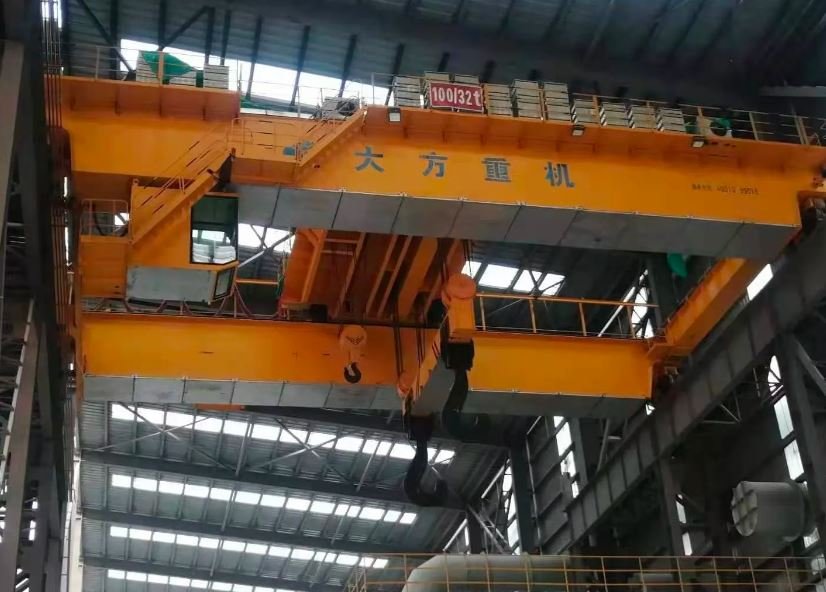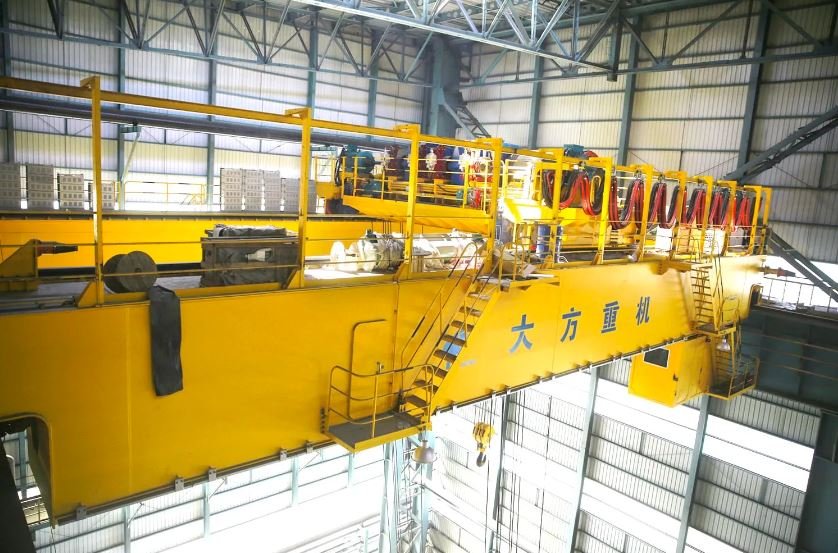Auto
Innovations in Crane Technology: The Future of Lifting

In the ever-evolving world of heavy machinery, the crane industry has experienced a remarkable transformation in recent years. Innovations in crane technology have ushered in a new era of efficiency, safety, and sustainability. This article delves into the exciting developments in the crane industry, focusing on automation, digitalization, and sustainability, and how these innovations are reshaping the future of lifting.
The Rise of Automation
Automation is a game-changer in the crane industry. Traditional cranes required skilled operators to control their movements, but with the advent of automation, cranes can now perform tasks with incredible precision and efficiency. Automated cranes are equipped with sensors, cameras, and advanced algorithms that allow them to operate without human intervention.
One of the most significant advantages of automated cranes is their ability to optimize lifting operations. They can precisely calculate load weights, monitor environmental conditions, and adjust their movements accordingly. This not only enhances safety but also improves productivity by reducing downtime and human error.
Digitalization and Remote Monitoring
Digitalization has become synonymous with progress in the modern world, and the crane industry is no exception. Cranes are now equipped with advanced telematics systems that enable remote monitoring and control. This means that crane operators can oversee operations from a distance, enhancing safety and efficiency.
Through digitalization, cranes can collect vast amounts of data, such as performance metrics, maintenance schedules, and operational insights. This data can be analyzed to predict maintenance needs, reduce downtime and ensure that cranes operate at their optimal capacity. Additionally, real-time monitoring allows for immediate response to any issues, minimizing the risk of accidents.
Sustainability and Eco-Friendly Cranes
Sustainability is a driving force in today’s world, and the crane industry is embracing eco-friendly practices. Cranes are now being designed with sustainability in mind, using cleaner energy sources and reducing their environmental footprint.
One notable innovation is the development of electric cranes. These cranes rely on electricity instead of diesel fuel, reducing emissions and noise pollution on construction sites. Moreover, regenerative braking systems are being integrated, which capture and store energy during lowering operations, further enhancing energy efficiency.
Smart Crane Technology
Smart technology has permeated every aspect of our lives, and cranes are no exception. Smart crane technology involves the integration of Artificial Intelligence (AI) and the Internet of Things (IoT) to create cranes that can make decisions, learn from data, and communicate with other machinery.
These smart cranes can perform complex tasks with minimal human input. They can analyze data from various sensors to determine the best lifting strategies, adapt to changing conditions, and even predict maintenance needs. This level of intelligence not only improves efficiency but also reduces the risk of accidents.
The Future of Lifting
The future of lifting is undoubtedly exciting, thanks to these innovations in crane technology. As automation, digitalization, and sustainability continue to evolve, we can expect to see cranes that are even more efficient, safer, and environmentally friendly.
Imagine construction sites where cranes work seamlessly alongside other machinery, sharing data and optimizing operations in real-time. Picture a world where crane operators have access to advanced digital interfaces that make their jobs easier and safer. Envision a future where cranes are powered by renewable energy sources, contributing to a greener planet.
The crane industry has been steadily advancing, embracing cutting-edge technologies that redefine the way heavy lifting is done. Among the industry leaders pushing the boundaries of innovation is Dafang Crane, a company that has earned a reputation for its pioneering contributions to crane technology. In this article, we will explore some of the remarkable innovations introduced by Dafang Crane and how these innovations are shaping the future of lifting operations.
Dafang Crane: Pioneering Innovations in Crane Technology
Smart Crane Systems
One of Dafang Crane’s standout innovations is the development of smart crane systems. These systems integrate Artificial Intelligence (AI) and Internet of Things (IoT) technologies to create cranes that can think and adapt. Dafang’s smart cranes are equipped with advanced sensors and cameras that continuously monitor the environment, allowing them to make real-time adjustments for optimal performance and safety.
These smart cranes can detect obstacles, calculate load weights, and assess weather conditions to ensure safe and efficient lifting operations. They can also predict maintenance needs, reducing downtime and costly repairs. With Dafang’s smart crane systems, the future of lifting is not just about power but also intelligence.

Remote Monitoring and Control
Dafang Crane recognizes the importance of remote monitoring and control in enhancing safety and efficiency. Their cranes come equipped with state-of-the-art telematics systems that enable operators to oversee operations from a distance. This remote capability allows for quicker response times in case of emergencies and reduces the need for operators to be physically present in the crane cabin.
Furthermore, remote monitoring enables data collection on crane performance and operational insights. Dafang’s clients can access real-time data, enabling them to make informed decisions about maintenance, scheduling, and load management. This level of control and insight is instrumental in optimizing crane operations.
Safety Innovations
Safety is paramount in the crane industry, and Dafang Crane has introduced several groundbreaking safety innovations. Their cranes are equipped with advanced anti-collision systems that use radar and cameras to detect potential collisions and automatically halt crane movements to prevent accidents.
Additionally, Dafang has invested in operator training and certification programs, ensuring that crane operators are well-prepared to handle the complexities of modern crane technology. Safety is not just a feature but a fundamental aspect of Dafang’s innovations.
Dafang Crane stands as a beacon of innovation in the crane industry, pushing the boundaries of what’s possible in heavy lifting operations. Their smart crane systems, remote monitoring and control, commitment to sustainability, and unwavering dedication to safety make them a driving force in shaping the future of lifting technology. As Dafang Crane continues to lead the way, we can anticipate a future where lifting heavy loads is not only efficient but also safer and more sustainable than ever before. Dafang Crane is indeed at the forefront of revolutionizing crane technology for the better.
Conclusion
Innovations in crane technology are revolutionizing the way we approach lifting operations. Automation, digitalization, and sustainability are driving the crane industry towards a future that is more efficient, safer, and environmentally conscious. As these advancements continue to shape the industry, we can look forward to a world where lifting heavy loads is not only easier but also more sustainable than ever before. The future of lifting is bright, and it’s being built one innovation at a time.
-

 Business2 months ago
Business2 months agoTech Capital One: Careers, Jobs, and Opportunities
-

 Digital Marketing2 months ago
Digital Marketing2 months agoHow Embedded Payments Are Turning Apps Into Revenue Engines
-

 Real Estate2 months ago
Real Estate2 months agoDigital Tools That Are Changing the Way We Relocate
-

 Tech1 month ago
Tech1 month agoSora 2 Invite Code: How to Get One (Step-by-Step Guide)






